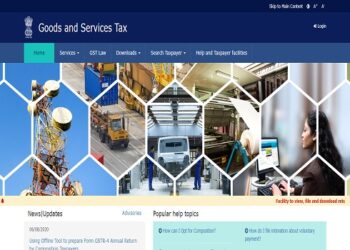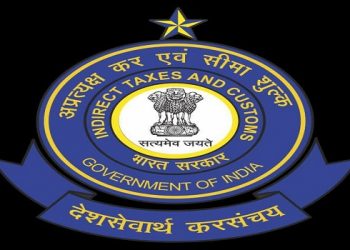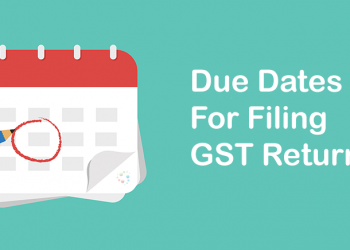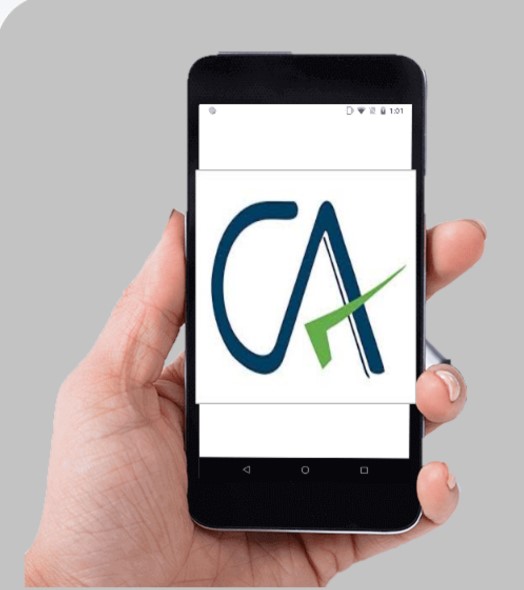GST was considered to be a game changer and also reduce the cost of goods as now people could take credit of goods as well as services at the same time which was not available earlier.
However the same was not implemented in a perfect manner and hence there were situations where people had input at higher rate and output at lower rate and because of which there used to be always a balance in Credit ledger of the supplier which started blocking cash flow of a businessman. Therefore to solve this issue refund was provided in such cases.
However there are some queries related to such refund and in this post we shall some of the queries related to refund under GST.
1. Bunching of refund claims across Financial Years:
In para. 8 of circular no. 125/44/2019 – GST, CBIC has made it clear that while making a claim for refund same cannot spread over different financial years, which is reproduced as under:
“8. The applicant, at his option, may file a refund claim for a tax period or by clubbing successive tax periods. The period for which refund claim has been filed, however, cannot spread across different financial years. Registered persons having aggregate turnover of up to Rs. 1.5 crore in the preceding financial year or the current financial year opting to file FORM GSTR-1 on quarterly basis, can only apply for refund on a quarterly basis or clubbing successive quarters as aforesaid. However, refund claims under categories listed at (a), (c) and (e) in para 3 above must be filed by the applicant chronologically. This means that an applicant, after submitting a refund application under any of these categories for a certain period, shall not be subsequently allowed to file a refund claim under the same category for any previous period. This principle / limitation, however, shall not apply in cases where a fresh application is being filed pursuant to a deficiency memo having been issued earlier.”
However various representations were made by assessee and various High Court’s have ordered in favor of assessee stating that “Circulars can supplant but not supplement the law. Circulars might mitigate rigours of law by granting administrative relief beyond relevant provisions of the statute, however, Central Government is not empowered to withdraw benefits or impose stricter conditions than postulated by the law.”
The issue has been examined and it has been decided to remove the restriction on clubbing of tax periods across Financial Years. Accordingly, circular No. 125/44/2019-GST dated 18.11.2019 stands modified to that extent i.e. the restriction on bunching of refund claims across financial years shall not apply.
2. Refund of accumulated input tax credit (ITC) on account of reduction in GST Rate:
Department had received various representation that there is accumulated balance of ITC because of reduction of GST rate and now same would be eligible for refund under inverted duty structure under clause (ii) of sub-section (3) of section 54 of the CGST Act.
However as per GST department same won’t be covered under such scheme because: “the input and output being the same in such cases, though attracting different tax rates at different points in time, do not get covered under the provisions of clause (ii) of sub-section (3) of section 54 of the CGST Act. It is hereby clarified that refund of accumulated ITC under clause (ii) of sub-section (3) of section 54 of the CGST Act would not be applicable in cases where the input and the output supplies are the same.”
3. Guidelines for refunds of Input Tax Credit under Section 54(3):
After considering sub rule 4 of rule 36, a conclusion has been drawn that the refund of accumulated ITC shall be restricted to the ITC as per those invoices, the details of which are uploaded by the supplier in FORM GSTR-1 and are reflected in the FORM GSTR-2A of the applicant.
4. New Requirement to mention HSN/SAC in Annexure ‘B’:
While making a claim for refund, refund was not available on ITC on capital goods. However since no HSN was available in GSTR 2A it becomes difficult for officer to differentiate between normal ITC and ITC of capital goods and hence Annexure-B of the circular No. 125/44/2019-GST, dated 18.11.2019 stands modified to that extent.
The applicant is, in addition to details already prescribed, now required to mention HSN/SAC code which is mentioned on the inward invoices. In cases where supplier is not mandated to mention HSN/SAC code on invoice, the applicant need not mention HSN/SAC code in respect of such an inward supply.
You can download the circular from HERE.
This article is just for information purpose it is always advisable to hire a professional for practical execution. If you need assistance you can ask a question to our expert and get the answer within an hour or post a comment about your views on the post and also subscribe to our newsletter for latest weekly updates.











![[Live] Updates and Tax changes for Budget 2023 | Tax on cryptocurrency | Income tax and GST udpates in Budget 2023 [Download Bill]](https://www.taxontips.com/wp-content/uploads/2023/02/Budget-2023-120x86.webp)

